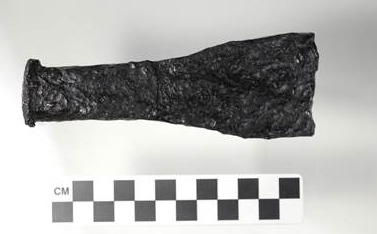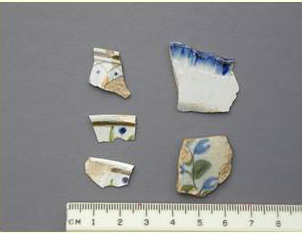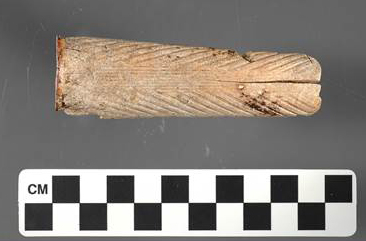by Khalil Quotap
Institute for American Indian Studies, Washington
TEACHER'S SNAPSHOT
Course Topics/Big Ideas:
The Struggle for Freedom, Equality, and Social Justice
Town:
East Haddam, Statewide, Stonington
Grade:
Grade 8
ESSENTIAL QUESTION
SUPPORTING QUESTIONS
- How can objects be used to support written accounts of historical events?
- What kind of life could a former slave expect to have in the Connecticut colony in the late 1700s?
- What is a primary source? Secondary? And how can they be used in research?
ACTIVITY
Students will read a brief summary of Venture Smith’s history and examine the artifact images found on the Smith Homestead dig site. They will use the information from the artifact to support their findings.
- What do the artifacts tell about the person who lived there?
- How can you be sure the artifacts are real?
- Based on what the artifacts found, how do you think the family lived during the late 1700s?
- How does this change the way you think of how minorities were treated in the past?
- What does this tell you about the general population in Connecticut and their view of minorities during the late 1700s?
OPPORTUNITIES FOR ASSESSMENT
- Have students share their specific evidence in response to the compelling and supporting questions.
- Inquiry projects
- What types of discrimination or challenges would former slaves face?
- What employment or occupations might a former slave expect to find?
- How was life at sea an option for former slaves?
- Compare the experiences of immigrants today with former slaves in the colonies.
- Have students bring an artifact from home and ask: “What would historians think about life now based on the artifacts we would leave behind?”
RESOURCE TOOL KIT
Things you will need to teach this lesson:

Boat Caulking Iron. Identified by Dr. William Peterson, senior curator, and Quentin Snediker, director of the shipyard, at Mystic Seaport. Both were pleased to confirm that site structures and artifacts demonstrate Venture Smith’s mariner activities.
Domestic Artifacts: These objects have been excavated in and around structures at the Smith Homestead dig site. These materials include an incised bone knife handle, early bottle glass and a variety of 18th- and early 19th-century ceramics.

Piece of an early glass bottle.

Shards of 19th-century ceramics.

Incised bone handle.

Timeline of Venture Smith’s life created for a presentation by Lucianne Lavin, Ph.D.
ADDITIONAL RESOURCES
Places to GO
CTFreedomTrail.org: Venture Smith Gravesite
Things To DO
Read Venture Smith’s own words in the book: “A Narrative of the Life and Adventures of Venture, a Native of Africa: But Resident Above Sixty Years in the United States of America.” C. Holt, 1798. Digitized by the The University of North Carolina at Chapel Hill.
Websites to VISIT
ConnecticutHistory.org Topic Page – Slavery and Abolition
Articles to READ
ConnecticutHistory.org:
- “Venture Smith, from Slavery to Freedom” by John Wood Sweet.
- “New London’s Indian Mariners” by Jason R. Mancini for © Connecticut Explored. All rights reserved. This article originally appeared in Connecticut Explored (formerly Hog River Journal) Vol. 7/ No. 2, SPRING 2009.
“More Exciting Discoveries At The Venture Smith Archaeology Site: A Window Into The Life Of An 18th-Century African Prince, Ex-captive & Free African American Merchant-Farmer.” by Lucianne Lavin, Connecticut Preservation News, January/February 2008.



